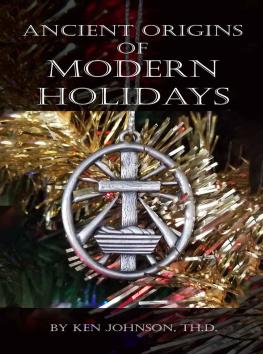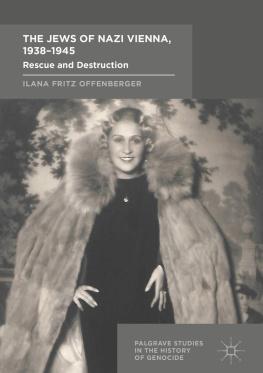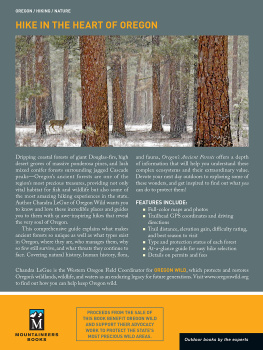Ancient Households on the North Coast of Peru
Edited by
Ilana Johnson, David Pacifico, and Robyn E. Cutright
U NIVERSITY P RESS OF C OLORADO
Louisville
2021 by University Press of Colorado
Published by University Press of Colorado
245 Century Circle, Suite 202
Louisville, Colorado 80027
All rights reserved

The University Press of Colorado is a proud member of the Association of University Presses.
The University Press of Colorado is a cooperative publishing enterprise supported, in part, by Adams State University, Colorado State University, Fort Lewis College, Metropolitan State University of Denver, Regis University, University of Colorado, University of Northern Colorado, University of Wyoming, Utah State University, and Western State Colorado University.
ISBN: 978-1-64642-090-2 (hardcover)
ISBN: 978-1-64642-091-9 (ebook)
https://doi.org/10.5876/9781646420919
Library of Congress Cataloging-in-Publication Data
Names: Johnson, Ilana, editor. | Pacifico, David, editor. | Cutright, Robyn E., editor.
Title: Ancient households on the north coast of Peru / Ilana Johnson, David Pacifico, Robyn E. Cutright.
Description: Louisville : University Press of Colorado, [2021] | Includes bibliographical references and index.
Identifiers: LCCN 2020033053 (print) | LCCN 2020033054 (ebook) | ISBN 9781646420902 (hardcover) | ISBN 9781646420919 (ebook)
Subjects: LCSH: Indians of South AmericaPeruPacific CoastSocial life and customsCase studies. | Household archaeologyPeruPacific CoastCase studies. | Material culturePeruPacific Coast. | Indians of South AmericaDwellingsPeruPacific Coast. | Indians of South AmericaPeruPacific CoastAntiquities. | Dwellings, PrehistoricPeruPacific Coast. | Social archaeologyPeruPacific Coast.
Classification: LCC F2230.1.S7 A63 2021 (print) | LCC F2230.1.S7 (ebook) | DDC 985/.01dc23
LC record available at https://lccn.loc.gov/2020033053
LC ebook record available at https://lccn.loc.gov/2020033054
Cover photograph of Pampa Grande by Ilana Johnson; figurine photographs courtesy of Museo Larco, Lima.
Contents
David Pacifico and Ilana Johnson
Brian R. Billman
David Chicoine, Hugo Ikehara, and Jessica Ortiz
Guy S. Duke
Ilana Johnson
Giles Spence Morrow
David Pacifico
Robyn E. Cutright
Kari A. Zobler
Edward Swenson
Diverse, Dynamic, and Enduring
Ancient Households on the North Coast of Peru
David Pacifico and Ilana Johnson
The enduring presence of domestic contexts in the archaeological record means that the household perspective is as valuable as ever for deciphering the cultural beliefs and practices of Perus ancient inhabitants. Building on a long tradition of household archaeology, this book contributes new case studies focusing on ancient households on the north coast of Peru. All of the studies in this volume build upon previous efforts in household archaeology in the Andes. Many also invoke related perspectives, including community archaeology (e.g., Canuto and Yaeger 2000) and neighborhood archaeology (e.g., Pacifico and Truex 2019b). Accordingly, the cases that follow should be considered complementary to earlier studies and parallel approaches.
Nevertheless, the findings here suggest that revision is needed to our understanding of households. Specifically, this volume emphasizes hitherto unrealized dynamism, mutability, and diversity of Precolumbian houses and households. Following a century of archaeological research focusing on the monumental and mortuary contexts of North Coast archaeological sites, this volume presents the first trans-temporal synthesis of household research in the North Coast and, in so doing, covers more than 1,000 years of coastal prehistory. The material diversity presented in this volume suggests that households take different forms within a single culture or even settlement. Households serve a variety of purposes that change over time, causing the same household to leave different archaeological indices depending on the spatial and temporal context within which the household functioned. In addition, households combine, fragment, and recombine in new configurations, which suggests that they have fluid relationships with larger-scale settlements like neighborhoods, communities, cities, and states. Fluidity does not necessarily imply weak relationships. Instead, it indicates the dynamic nature of social and political alliances on the North Coast in prehistory. The underlying factors that affect household diversity and dynamism are faced by families around the world. Population movement can be coordinated with agricultural cycles, kinship organization can be reorganized by economic changes, or local identities can be resilient or disappear in the face of culture change. We can therefore use the newly discovered household contexts presented in this book to compare ancient Andean case studies with those from other times and places. These complex nuances and their comparative promise attest to the vitality and relevance of household archaeology for exploring human culture and society in the past.
Categories of Thought
Household archaeology is the study of daily life, domestic practices, and household social organization. This archaeological approach has existed for many decades, if not centuries if we count early excavations at Pompeii (Ceram 1979). Yet there is only tacit agreement about the terms used to investigate and analyze archaeological households. In place of explicit agreement, many archaeologists hover around a set of concepts that are good to think with. Here we highlight four interrelated categories of thought that have provided traction in household archaeology: materiality, practice, scale, and symbolism. We highlight these categories in particular, because the cases detailed in this volume both build on the momentum of these terms but also suggest new intellectual trajectories described by these terms within household archaeology. We would also highlight that these intellectual categories implicate one another as essential dimensions for analysis, and they are likely to be difficult to disentangle. This complexity is an optimistic one, for it highlights the promise of new and rich understandings of the past from the perspective of residential life.
Materiality: House and Household
Household archaeology requires simultaneous attention to the physical remains of residential structures (viz. houses) and the material remains of the people who lived, worked, and visited with and around the structure (Ames 1996; Blanton 1994; Haviland 1985; Hirth 1993; Netting 1982; Netting et al. 1984; Wilk and Rathje 1982). An early, useful definition endures in Andean archaeology. This definition is entirely focused on materiality; it defines the household as the smallest architectural and artifactual assemblage repeated across a settlement subject to site formation processes during habitation, abandonment, and afterward (LaMotta and Schiffer 1999; Stanish 1989, 11). This archaeological definition focuses on the materiality both of houses themselves as well as the physical remains of people and activities that took place within them. Moreover, this definition emphasizes the fundamental nature of households to their wider social contexts. Attention to both container and contained is an essential and enduring characteristic of household archaeology (Hendon 2010).
 The University Press of Colorado is a proud member of the Association of University Presses.
The University Press of Colorado is a proud member of the Association of University Presses.








